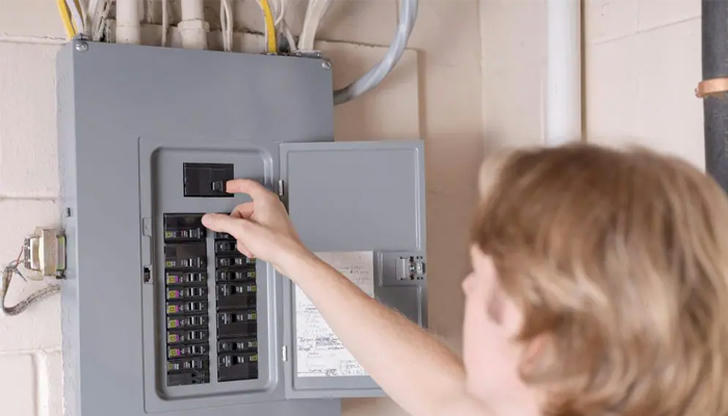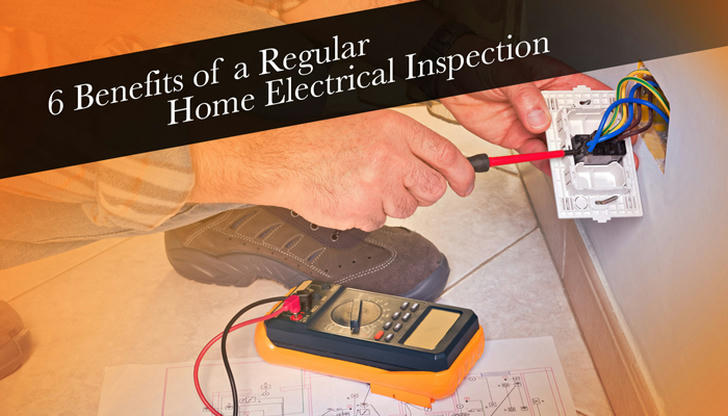Understanding Your Home's Electrical System: Basic Safety Tips
Electricity powers our modern lives—from lighting and heating to appliances and entertainment. Yet for something so essential, many homeowners understand very little about how their home’s electrical system works. This guide provides a beginner-friendly overview of residential electrical systems and offers vital safety tips that every homeowner and renter should know.

Whether you're a DIY enthusiast, a new homeowner, or just someone looking to stay safe, this article will give you the foundational knowledge and safety awareness needed to interact with home electrical systems confidently and responsibly.
Why Understanding Your Electrical System Matters
A basic understanding of your home’s electrical system can help you:
- Recognize signs of electrical problems before they become hazards
- Make smarter decisions during DIY tasks or renovations
- Communicate effectively with electricians
- Avoid electrical fires, shocks, and costly repairs
According to the National Fire Protection Association (NFPA), electrical failures or malfunctions are one of the leading causes of home fires. Knowledge and caution can save lives and property.
Overview of a Home Electrical System
1. Main Service Panel (Breaker Box)
This is the heart of your electrical system. It distributes electricity from your utility provider to various circuits in your home.
- Usually located in basements, garages, or utility rooms
- Contains circuit breakers (or fuses in older homes)
- Each breaker controls power to a specific area or appliance
- The main breaker can shut off power to the entire house
Tip: Always label breakers for easy identification.
2. Circuits and Wiring
Electricity is distributed through circuits—closed loops of wiring that carry electricity from the panel to outlets, lights, and devices.
Types of circuits:
- 15-amp and 20-amp circuits for lighting and general outlets
- Dedicated circuits for heavy appliances (e.g., oven, HVAC)
- GFCI circuits in bathrooms, kitchens, and outdoor areas to prevent shock
Wiring types include:
- Romex (non-metallic sheathed cable): Common in modern homes
- BX cable (metal-sheathed): Often found in older homes
- Conduit systems: Common in commercial or exposed installations
3. Outlets and Switches
- Standard outlets deliver 120 volts
- 240-volt outlets are used for dryers, ranges, etc.
- GFCI outlets shut off power when a ground fault is detected
- AFCI outlets help prevent arc faults, especially in bedrooms
4. Grounding System
Grounding provides a safe path for electricity to follow in case of a fault. All major appliances and outlets should be properly grounded to prevent electric shocks.
Basic Electrical Safety Tips
Electricity is powerful—and potentially dangerous if mishandled. Follow these fundamental safety principles:
1. Never Overload Circuits
Overloading a single outlet or power strip can lead to overheating and fire.
- Avoid daisy-chaining extension cords
- Don’t plug multiple high-wattage devices into the same outlet
- Use power strips with built-in surge protection
2. Use the Right Wattage for Light Fixtures
Using a bulb with too high a wattage can overheat and damage the socket or wiring.
- Check the maximum wattage rating printed on the fixture
- Consider switching to LED bulbs, which use less energy and generate less heat
3. Test GFCI Outlets Monthly
GFCI outlets are your first line of defense in wet or damp areas.
- Press the "Test" button; it should click and shut off power
- Press "Reset" to restore function
- If it doesn’t work, replace it immediately or call an electrician
4. Know the Signs of Electrical Trouble
Call a licensed electrician if you notice any of the following:
- Frequent circuit breaker trips
- Flickering or dimming lights
- Hot outlets or switch plates
- A burning smell from appliances or outlets
- Buzzing sounds from electrical panels or walls
5. Don’t Ignore Circuit Breaker Trips
If a breaker frequently trips, it’s not just an inconvenience—it’s a warning sign.
- Unplug devices from that circuit
- Avoid resetting it more than once without investigating
- Persistent issues may indicate a wiring fault or overloaded circuit
6. Childproof Your Outlets
For households with young children:
- Use plastic outlet covers or sliding safety plates
- Avoid leaving cords dangling from counters
- Keep appliances out of reach
7. Use Extension Cords Safely
Extension cords are for temporary use only.
- Never run them under rugs or furniture
- Choose the right gauge for the device's power demand
- Inspect cords regularly for fraying or cracks
- Don’t use outdoor cords indoors or vice versa
8. Turn Off Power Before Repairs
Before changing a light fixture, installing a new switch, or doing any electrical task:
- Turn off the circuit breaker for that area.
- Use a non-contact voltage tester to confirm no power is flowing.
- Wear rubber-soled shoes and avoid working in wet conditions.
9. Avoid Water and Electricity Contact
Water conducts electricity. Keep appliances, cords, and outlets away from sinks, bathtubs, or outdoor puddles.
- Install GFCI outlets in bathrooms, kitchens, garages, and all outdoor areas
- Dry your hands before plugging in or unplugging devices
10. Schedule Electrical Inspections
For older homes or after major renovations:
- Have a licensed electrician inspect the entire system
- Ensure the system meets current code requirements
- Update aluminum wiring or outdated fuse boxes as needed

Electrical Safety Checklist for Homeowners
| Area | What to Check | How Often |
|---|---|---|
| Circuit Breakers | No tripping or corrosion | Monthly |
| GFCI Outlets | Test function | Monthly |
| Extension Cords | Inspect for damage | Before each use |
| Smoke Detectors | Functioning, batteries fresh | Every 6 months |
| Outdoor Outlets | Covered and GFCI protected | Annually |
| Power Tools | Grounded and undamaged | Before each use |
| Kitchen/Bath Fixtures | No water near cords | Ongoing |
What You Shouldn’t DIY
Even if you’re a confident DIYer, there are electrical tasks that should always be left to licensed electricians:
- Upgrading or relocating the main panel
- Installing new circuits
- Rewiring large sections of your home
- Working near water heaters, HVAC units, or pool pumps
Mistakes can lead to fire, shock, or even legal issues if your work doesn't meet code.
Smart Technology and Safety
Modern homes may include smart devices that connect to your electrical system:
- Smart plugs: Help monitor power usage and shut off power remotely
- Smart breakers: Alert you to overloading or faults via phone apps
- Energy monitors: Track consumption patterns and efficiency
These tools offer both convenience and enhanced safety awareness.
Emergency Situations and What to Do
Electrical Fire:
- DO NOT use water to put out the fire
- Use a Class C fire extinguisher
- Cut power at the main breaker if safe to do so
- Call 911 immediately
Electric Shock:
- Turn off the power source
- Do not touch the victim if the power is still on
- Call emergency services
- Begin CPR if trained and necessary
Fun Fact: How Much Electricity Do Common Devices Use?
| Device | Typical Wattage | Hourly Cost (Avg.) |
|---|---|---|
| LED Light Bulb | 10W | $0.001 |
| Microwave | 1000W | $0.12 |
| Laptop | 50W | $0.006 |
| Hair Dryer | 1500W | $0.18 |
| Refrigerator | 150W (avg.) | $0.02/hour |
Understanding energy use helps you manage your bills and prevent overloads.

Conclusion: Empower Yourself with Knowledge
Your home's electrical system doesn't have to be a mystery. With a little education and regular attention to safety, you can prevent accidents, save money, and feel more confident about managing your space.
From understanding circuit breakers to recognizing warning signs and using outlets safely, the steps outlined here can help you make your home a safer and more efficient place.
When in doubt—call a licensed electrician. Safety is always the priority.
